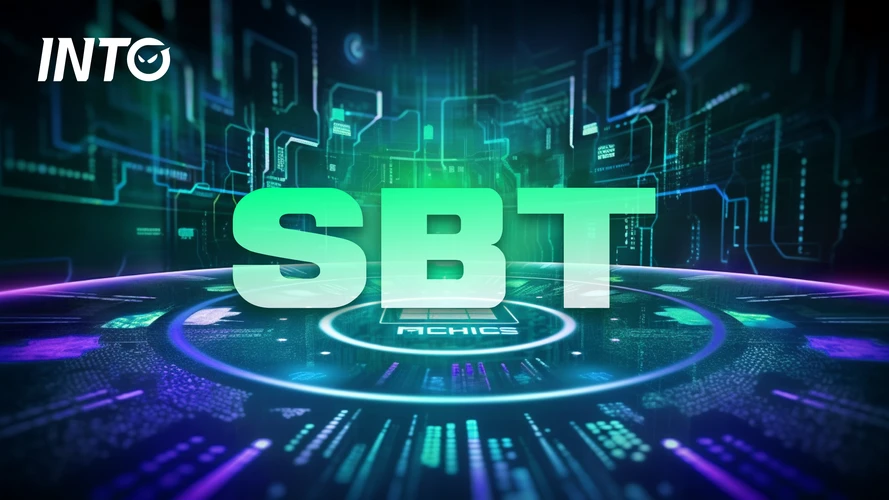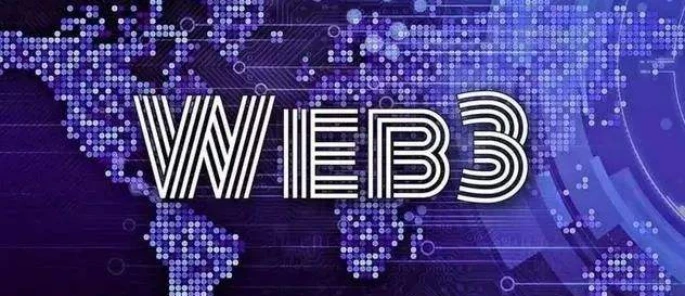The wave of Web3 is reshaping the digital world at an alarming speed. In this transformation, ecosystem construction has become a key factor in determining the success or failure of a project. Platforms that can create a prosperous, open, and interconnected ecosystem are standing out in the Web3 arena, and INTO is one of them. As a newcomer in the Web3 social field, INTO is not satisfied with just being a social platform, but aims to build a comprehensive Web3 ecosystem, which is expected to become the standard infrastructure of the Web3 era.

1. Ecosystem construction is the key to the development of Web3
In the world of Web3, ecosystem construction has become the key to project success. Behind this, there are profound industry logic and technical roots.
First, from the perspective of value creation, Web3 is redefining the value chain of the Internet. In the Web2 era, value was mainly created and obtained by platforms, and users were just passive consumers. But in the Web3 era, every participant is a creator of value. Through blockchain technology, every interaction and contribution of users can be accurately recorded and quantified. This means that value is no longer concentrated in the hands of a few centralized platforms, but distributed throughout the entire ecosystem. Therefore, only by building a complete ecosystem can the value potential of Web3 be truly released.
Secondly, from the perspective of technical architecture, the decentralized nature of Web3 determines that a single application is difficult to exist independently. In the Web3 world, different applications and services are highly interconnected and interdependent. For example, a social application may need to rely on decentralized storage to save user data, rely on a decentralized identity system to verify user identity, and rely on a decentralized financial system to achieve value exchange. This high degree of interoperability requires that projects must be designed and developed with an ecological mindset.
Thirdly, from the perspective of user experience, Web3 needs to make up for the current usage threshold through ecological construction. It is undeniable that the current usage threshold of Web3 applications is still relatively high, and ordinary users may need to face complex wallet operations, high gas fees and other issues. Through ecological construction, these complexities can be encapsulated at the bottom layer to provide users with a smoother and more intuitive experience. Only in this way can Web3 truly achieve large-scale application.
Finally, from the perspective of the competitive landscape, ecosystem construction is an effective way for Web3 projects to build a moat. In the Web3 world, a single function can be easily imitated and surpassed. But a complete ecosystem can form a strong network effect and user stickiness. Once users are deeply involved in an ecosystem, they will form high migration costs, which provides the project with a continuous competitive advantage.
2. The Trinity of Digital Identity, SocialFi, and DAO
INTOs ecosystem construction strategy can be summarized as a trinity of digital identity, SocialFi, and DAO governance. These three dimensions support and promote each other, and together constitute INTOs unique Web3 social ecosystem.
First, INTO has reshaped the foundation of Web3 social networking through an innovative digital identity system. In the INTO ecosystem, each user has a unique digital identity based on SBT (Soul Binding Token) technology. This identity not only contains the users basic information, but also records multi-dimensional data such as the users social relationships, credit scores, and contributions. At present, INTO has issued SBT to nearly one million users, and these digital identities have become the passes for users in the Web3 world. In this way, INTO not only solves the trust problem in the anonymous environment of Web3, but also lays the foundation for subsequent financial and governance activities. For example, users can apply for decentralized loans based on their SBT, participate in DAO voting, and even create their own virtual images in the metaverse.

Secondly, INTO introduced the innovative concept of SocialFi (social finance), which perfectly integrates social interaction and finance. In the INTO ecosystem, social interaction is no longer just communication, but also a process of value creation. Users can get token rewards by publishing content, participating in discussions, completing tasks, etc. These tokens can not only be used within the platform, but also circulate in the broader Web3 ecosystem. INTO has also designed multi-level incentive mechanisms, such as creator funds and ecosystem builder rewards, to attract and retain high-quality users. This social earning model not only greatly increases the enthusiasm of user participation, but also injects continuous economic momentum into the entire ecosystem. For example, an ordinary user may earn tokens through daily social interactions, and then use these tokens to participate in DeFi projects in the INTO ecosystem to realize asset appreciation.
Finally, INTO is actively introducing the DAO (decentralized autonomous organization) mechanism to achieve true community autonomy. In the INTO ecosystem, major decisions are no longer made by a centralized team, but by the entire community. Each token holder has the right to participate in proposals and voting to influence the development direction of the platform. INTO has also designed a hierarchical governance mechanism to ensure both the democracy of decision-making and the efficiency of execution. For example, users can vote to decide the development priority of new features, the distribution plan of tokens, etc. This decentralized governance method not only enhances the cohesion of the community, but also ensures that the development direction of the platform is always consistent with the interests of users.
Through the synergy of these three dimensions, INTO is building a self-sufficient and self-evolving ecosystem. In this ecosystem, digital identity provides a trust foundation for all interactions, SocialFi motivates users to continue to participate, and DAO governance ensures the long-term healthy development of the ecosystem. These three support and promote each other, forming a positive cycle of ecological closed loop.
More importantly, INTOs ecosystem is not a closed system. INTO is actively cooperating with other Web3 projects, such as DeFi, NFT, blockchain games, etc., to build an open and interconnected ecosystem. Through this open ecological strategy, INTO not only expands its own boundaries, but also provides users with more possibilities.
3. A three-pronged approach of technology, mechanism and culture
To realize its ambitious ecological construction plan, INTO needs to work on technology, mechanism and culture at the same time. The synergy of these three dimensions constitutes the implementation path of INTOs ecological construction.
On the technical level, INTO has made full use of the cutting-edge technology of Web3 to provide a solid foundation for ecological construction. First, INTO uses a high-performance blockchain bottom layer to ensure system stability and transaction efficiency when large-scale users participate. Secondly, INTO has introduced privacy computing technologies such as zero-knowledge proof, which protects user privacy while realizing trusted computing and sharing of data. Thirdly, INTO has also developed an intelligent contract automatic execution system to enable complex ecological rules to be implemented transparently and efficiently. Finally, INTO has achieved interoperability with other public chains and applications through cross-chain bridging technology, greatly improving the openness and scalability of the ecosystem. These technological innovations provide strong technical support for INTOs ecological construction.

At the mechanism level, INTO has designed a complete incentive and governance system to ensure that the ecosystem can continue to operate in a healthy manner. First, INTO has launched a multi-level user incentive plan, including social earning, creator incentives, and ecosystem builder rewards, so that different types of users can find a way to participate that suits them. Secondly, INTO has established a dynamic token economic model, which balances the supply and demand of tokens through deflation mechanisms and pledge mechanisms to ensure the long-term stability of the token value. Thirdly, INTO has also introduced a hierarchical governance DAO mechanism, which ensures both the democracy of decision-making and the efficiency of execution. These carefully designed mechanisms together constitute the operating rules of the INTO ecosystem and provide institutional guarantees for the long-term development of the ecosystem.
At the cultural level, INTO is committed to cultivating a new type of Web3 social culture to provide lasting impetus for ecological construction. First, through education and guidance, INTO helps users establish the correct Web3 concept and understand the profound meaning of decentralization and token economy. Secondly, INTO encourages users to actively participate in ecological construction and cultivate their sense of ownership and responsibility. Thirdly, INTO also creates an open, innovative and collaborative atmosphere through various community activities and incentive mechanisms, allowing users to truly feel the charm of Web3. This kind of cultural construction not only enhances users sense of identity and belonging to the platform, but also lays a cultural foundation for the long-term sustainable development of the ecology.
Through the three-pronged approach of technology, mechanism and culture, INTO is turning the concept of ecological construction into reality. In this process, INTO is not only building a platform, but also cultivating an ecosystem and shaping a culture.
In general, INTOs ecological construction practice shows us a new possibility of Web3. It is not only the evolution of a social platform, but also an innovation of the form of digital social organization. In the world of INTO, everyone has their own digital identity, every interaction creates value, and every decision is made by the community.
This article is sourced from the internet: INTO: Social Super Node in the Web3 World
Original author: Frank, PANews As a leader in the crypto industry, Vitalik Buterin has always been active in the industry. In addition to being well-known as the founder of Ethereum, Vitalik has also invested in some new crypto projects in his personal name many times. On June 28, MegaETH, a layer 2 project that aims to build an ultra-high-performance real-time EVM, announced that it had received $20 million in financing, and Vitalik appeared on the list as an investor. PANews takes stock of the crypto projects that Vitalik has invested in to see how Vitaliks record as an investor is. According to public information, Vitalik has invested in 7 crypto projects so far. Among them, there are the well-known StarkNet and Polymarket, as well as Nocturne, which has poor operations…







